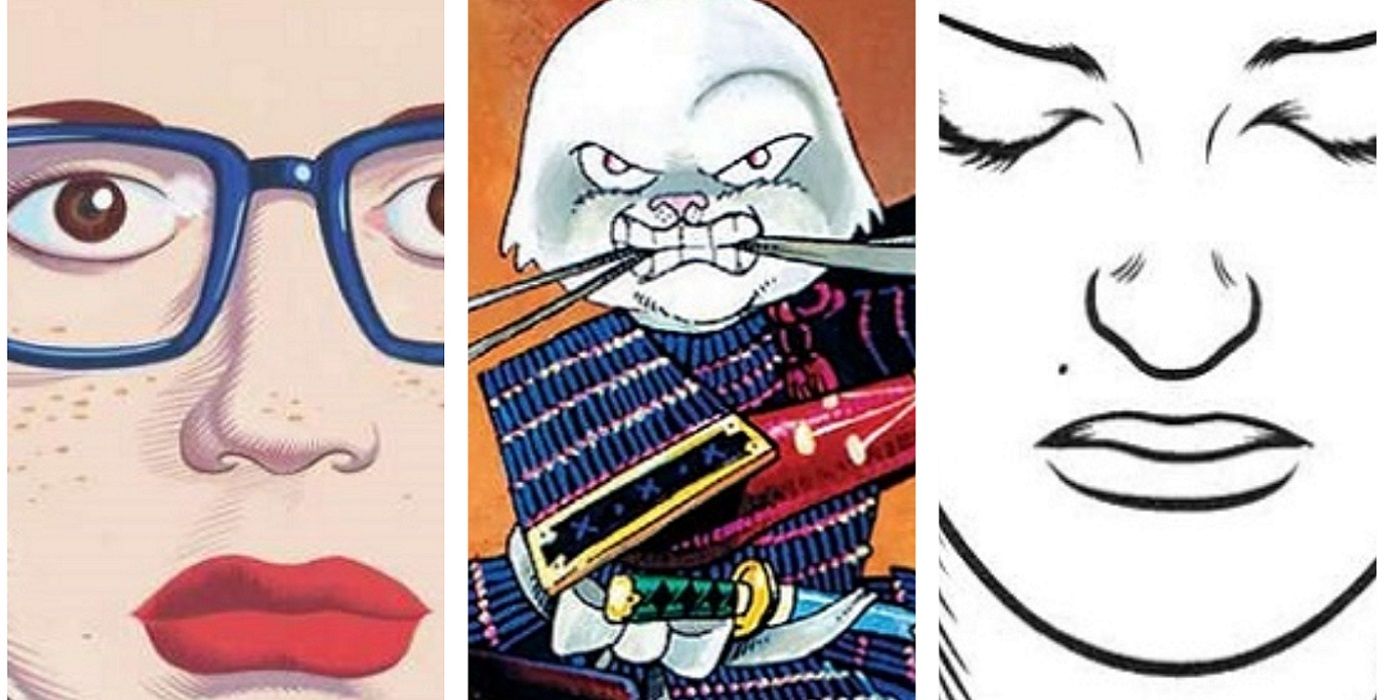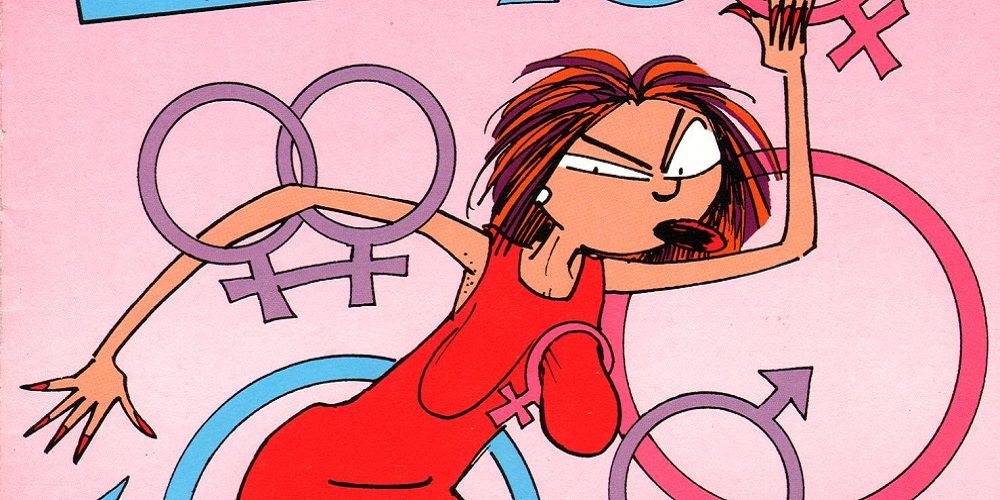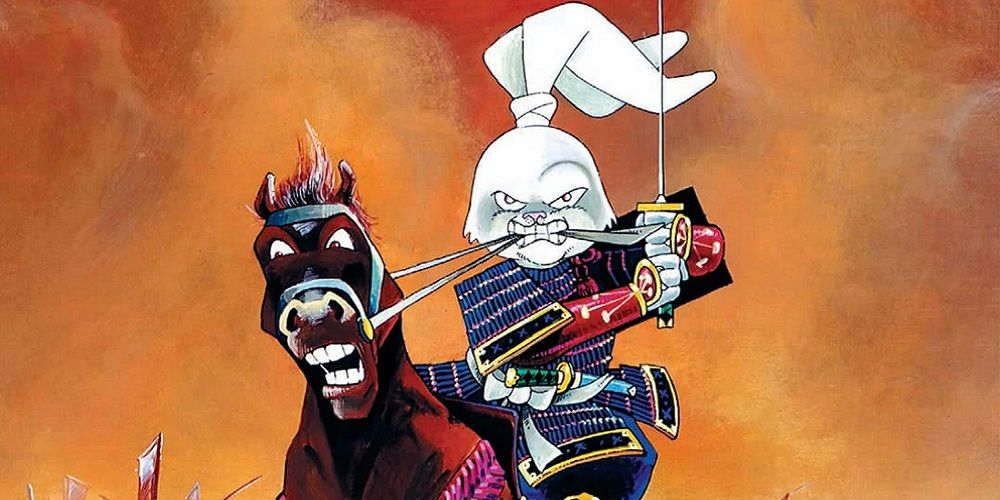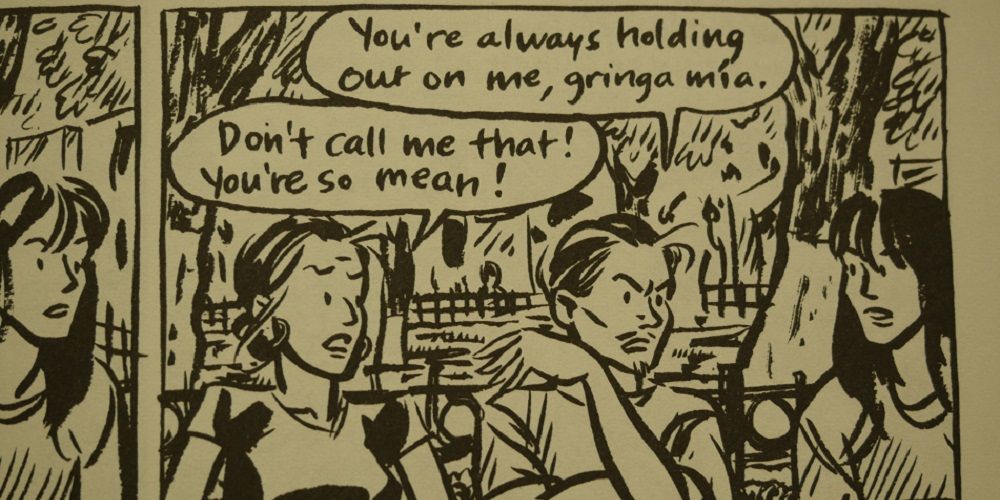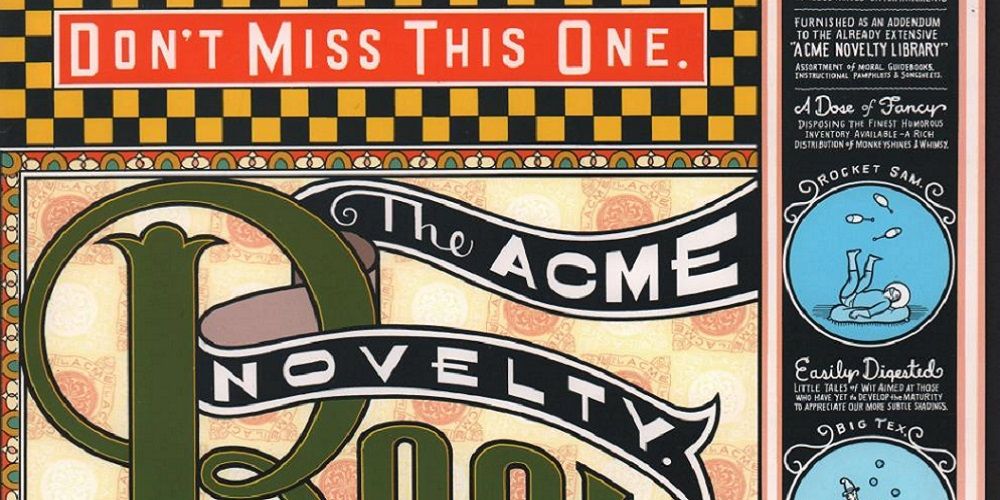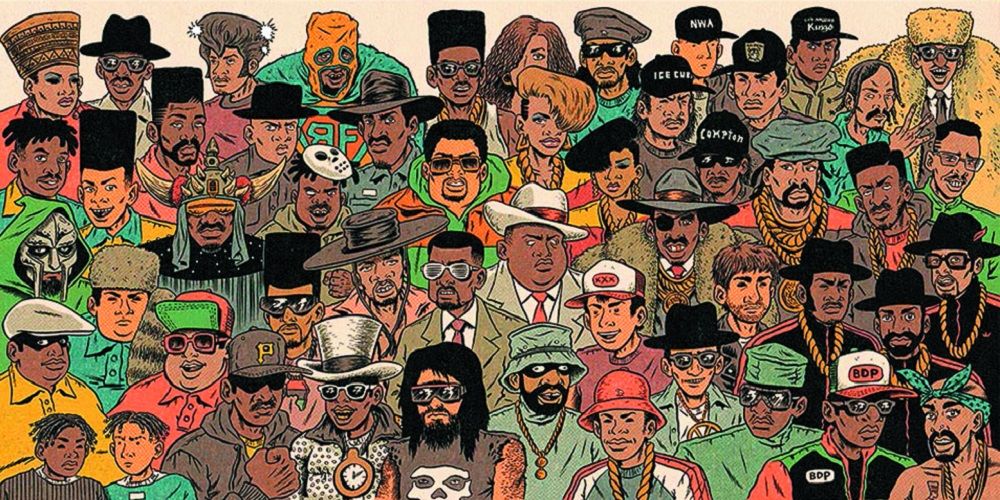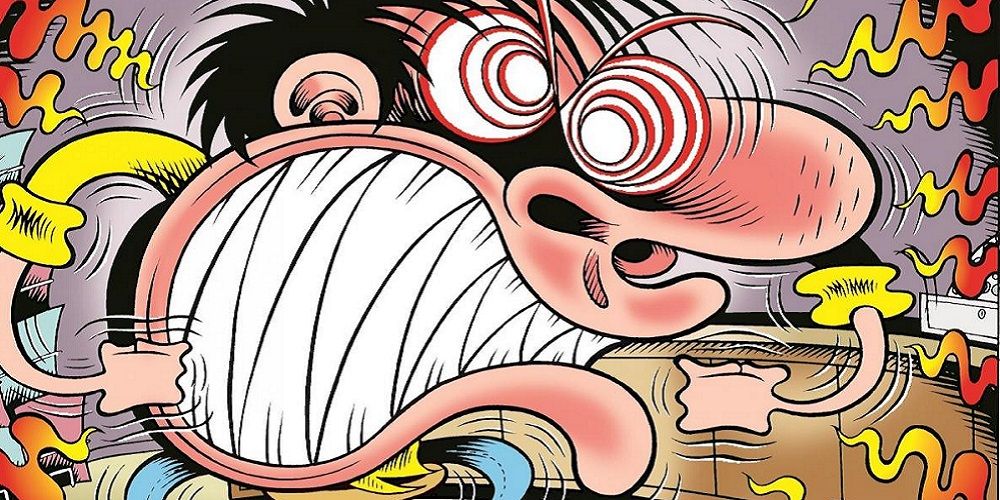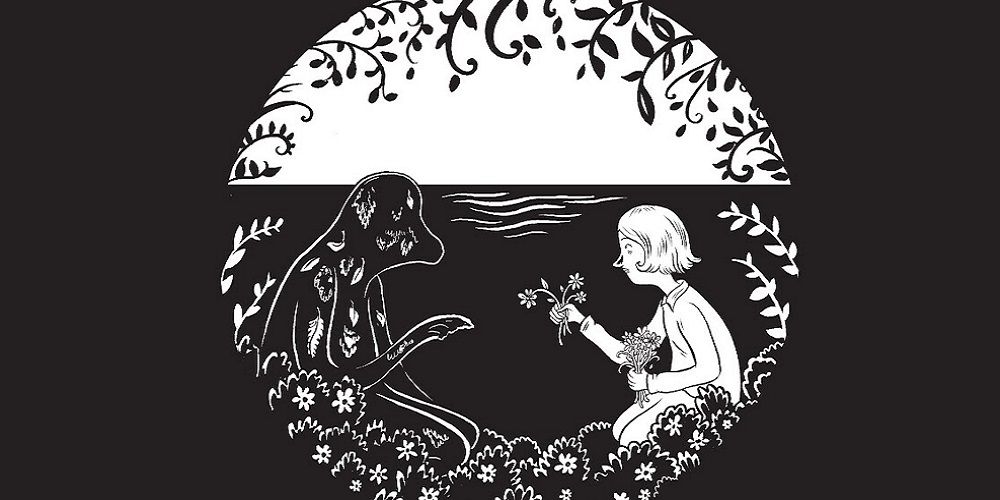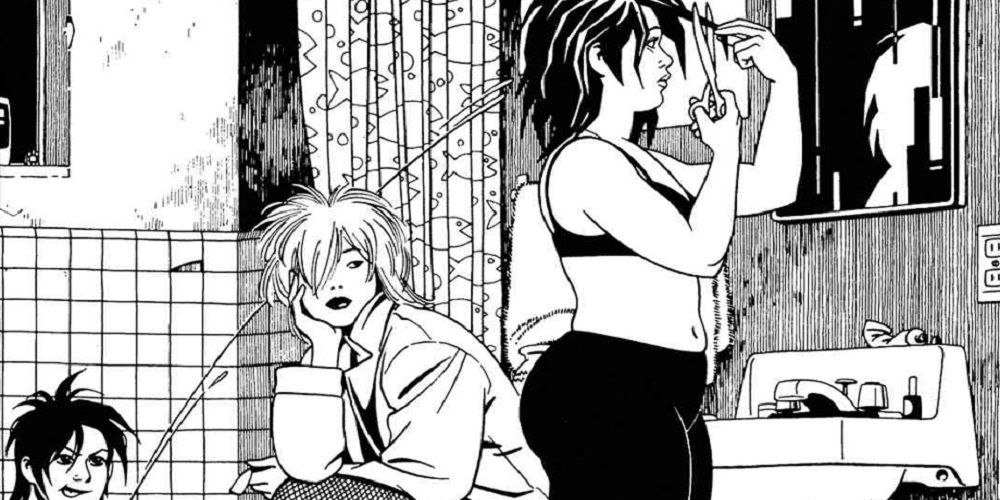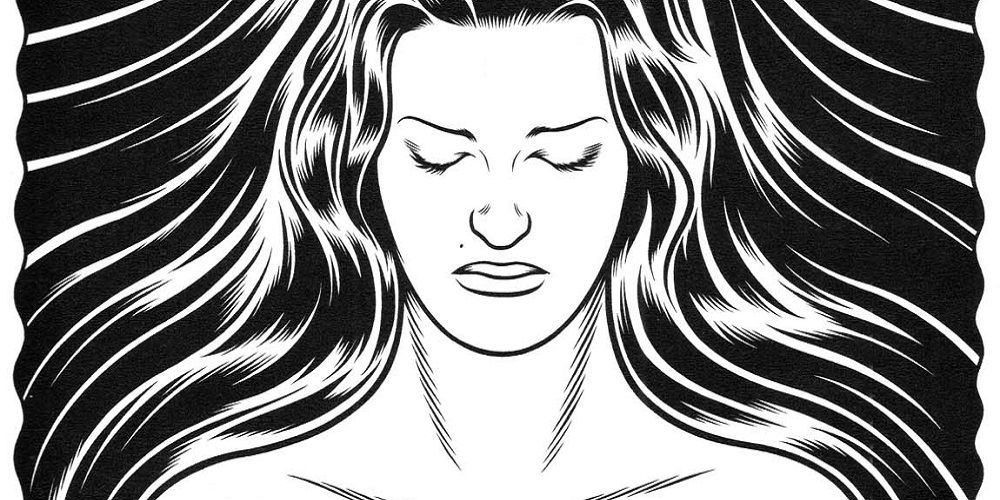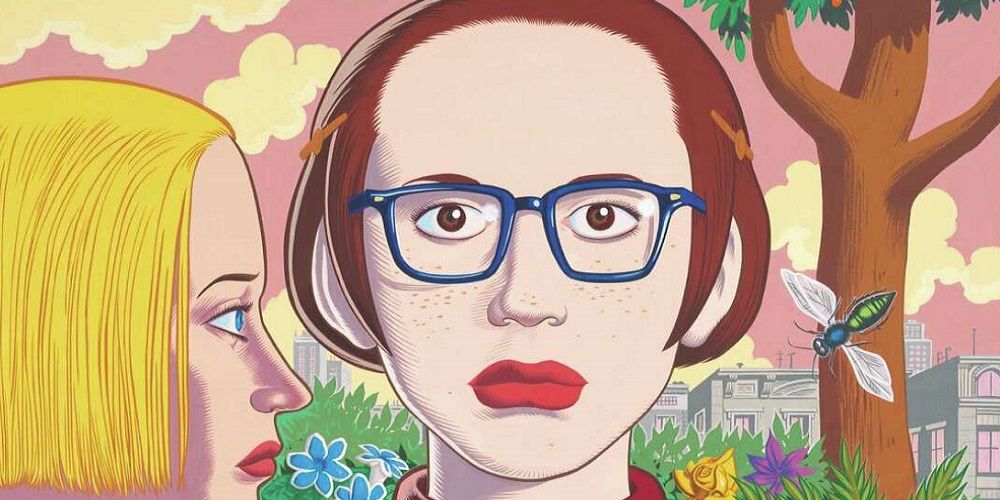Since 1979, Fantagraphics has been among the elites of independent comic book publishers. Founded by Gary Groth and Michael Catron in 1976, the publishing house is synonymous with unfettered voices producing high-quality, character-driven stories that don't fit neatly into the mainstream.
Fantagraphics comics do not have a single defining narrative style. Instead, the imprint's authors set forth various themes and characters that are both eccentric and empathetic, flawed and twisted but relatable. Similarly, the art found in these unconventional books does not fall into easy categorization or genre. Several titles stand out in this creative community as prime examples of the variegated Fantagraphics brand.
10 Naughty Bits Birthed A Frustrated Feminist Everywoman
When Roberta Gregory submitted the first issue of Naughty Bits to Fantagraphics, she anticipated a brief run with little fanfare. She did not expect the series to birth a long-running popular character, Bitchy Bitch. Fantagraphics published 40 Naughty Bits installments from 1991 to 2004, and Bitchy starred in both a syndicated comic strip and animated shorts aired on the Oxygen Network.
Naughty Bits was an independent work, with Gregory handling all the writing, drawing, inking, and lettering herself. Her protagonist was an everyday woman frustrated with the complicated world around her. As Bitchy's angst grew, her geometry would distort and sharpen, and her teeth transformed into a jagged grate of knives. Her fury at commonplace life struck a chord with readers, and Gregory developed a loyal following.
9 Usagi Yojimbo Incorporated Traditional Samurai Folklore
Creator Stan Sakai envisioned Usagi Yojimbo as a faithful biography of Miyamoto Musashi, a real-life Japanese samurai and artist who died in 1645. Sakai was born in Kyoto, Japan, and grew up watching samurai films every weekend near his childhood home in Hawaii. The young cartoonist thus absorbed traditional Japanese legends and art from an early age.
One day, while sketching the historical Musashi, Sakai spontaneously drew the master swordsman with a rabbit's head. That first fateful drawing of Usagi Yojimbo led to more than 280 comic books, two video games, a role-playing game, toys, and multiple appearances in animated series. The Fantagraphics series ran from 1987 to 1993 and featured colors by Tom Luth.
8 La Perdida Followed A Quest For Identity
Jessica Abel is an example of a true DIY artist. Beginning in 1992, she photocopied the first four issues of her Artbabe comic book and hand-stitched the pages together. After Abel financed Artbabe #5 with a Xeric grant, her industry and vision brought attention from Fantagraphics, which distributed her work to a broader audience.
La Perdida brought Abel even bigger acclaim in 2000. The Fantagraphics miniseries followed a Latina protagonist on a quest to Mexico to explore her roots. Abel created La Perdida's illustrations with brush strokes and dabs rather than fine lines with a bold, emotional result. Her style of layout and dialogue brought her comparisons with Art Spiegelman, and La Perdida won a Harvey Award in 2006.
7 Acme Novelty Library Challenged Readers' Expectations
Beginning in 1993, Fantagraphics published the first 15 issues of Chris Ware's Acme Novelty Library. The Library challenged the readers' notions about what comic books were supposed to look like, employing different sizes, layouts, perspectives, and formats throughout the life of the series.
Ware's illustration style varied, showing similarities to Charles Schultz's Peanuts, the fine lines of Moebius, and Dadaist art. The Library paid homage to early comics like Little Nemo in Slumberland and emulated antiquated advertising and signage. Acme Novelty Library won multiple Harvey and Eisner awards and continues to inspire and challenge new readers.
6 Hip Hop Family Tree Was An Encyclopedic Cultural Study
Ed Piskor has been a mainstay of the indie comics world since he found fame illustrating the writings of the legendary Harvey Pekar in 2004. His work with Pekar led to the documentary project The Beats: A Graphic History in 2009.
As a follow-up, Piskor produced another detailed historical study featuring voluminous research, Hip Hop Family Tree, with the first volume published by Fantagraphics in 2013. Both critics and fans regard the multivolume series as the definitive record of hip hop culture.
5 Hate Was A Cynical Yet Engrossing Journey Through 90s America
On the one hand, Hate was the journey of a bitter young man struggling with a 90s America that he could barely tolerate. On the other hand, Hate was wildly funny, startlingly rude, and ultimately irreplaceable. With his Buddy Bradley antihero, Peter Bagge created an autobiographical narrative that was both cynical and poignant.
Buddy originated in the pages of Neat Stuff, and Bagge followed his protagonist's travels from the hip streets of Seattle to the well-kept cul-de-sacs of middle class New Jersey. Modern readers can enjoy Hate both for its biting and often crude comedy and its nostalgic reflections on grunge culture.
4 The Lagoon Exuded Gothic Beauty
Lilli Carré is a multifaceted artist who is at home in the world of cinema and comic books. Among her full-length works for Fantagraphics, The Lagoon (2008) demonstrated the influence of horror films, particularly the dark gloom of the early Universal monster movies. At first glance, her use of heavy inks recalled the work of Charles Burns, with some frames almost black. However, Lagoon's figure drawing and character design were unlike Burns, with Carré inspiring memories of Mark Chagall's fluid, surreal figures. The Lagoon exuded gothic beauty and served as a moody introduction to Carré's art.
3 Love and Rockets Was The Breakout Title For Fantagraphics
Discovering Love and Rockets is like finding two entirely new continents populated with rich and deep Latinx characters who have lived and loved for the past 40 years. Love and Rockets' black and white landscape has two primary architects, Los Bros Hernandez, Jaime and Gilbert, also known as Xaime and Beto.
Their older brother Mario has also contributed stories over the years and was instrumental in bringing Love and Rockets to print as a self-published comic in 1982. Love and Rockets was a breakout title for Fantagraphics and brought the publisher to the forefront of the indie comics world.
2 Black Hole Transmitted The Darkness Of Adolescence
Kitchen Sink Press printed the first few issues of Black Hole. But Fantagraphics took over in 1998 when Kitchen Sink went out of business, allowing Charles Burn to finish his Harvey Award-winning work. A plague known as "the Bug" afflicted the Black Hole universe, infecting sexually active teens with a mutating pathogen. Some infected had easily hidden mutations that allowed them to stay in their homes and school. For others, their anatomy dramatically changed.
The transformed teenagers sometimes appeared as horror movie creatures or funhouse reflections, forcing them to abandon their previous lives and flee to remote communities of the infected. Charles Burns's illustration style is thick with obsidian black inks that often envelop characters in shadow. The art of the Black Hole miniseries is appropriately dark, setting the tone for the doomed characters' narrative.
1 Eightball Unfurled A Mysterious, Understated Tapestry
Dan Clowes' first installment of Eightball appeared in 1989. The Fantagraphics series was a collage of understated slice-of-life drama, absurd humor, and philosophical observation. Most issues featured a serialized anchor narrative, such as A Velvet Glove Cast in Iron, around which Clowes built odd skits and snapshots of lonely hipsters peopling a sparse urban landscape.
Many frames in Eightball had an almost arid feeling, dry and depopulated. It was as if the isolated heroes' anxious thoughts had rendered the bulk of humanity invisible, and only the desperate and the strange remained. In this quiet, mysterious world, Clowes unfurled some of Fantagraphics best moments.

